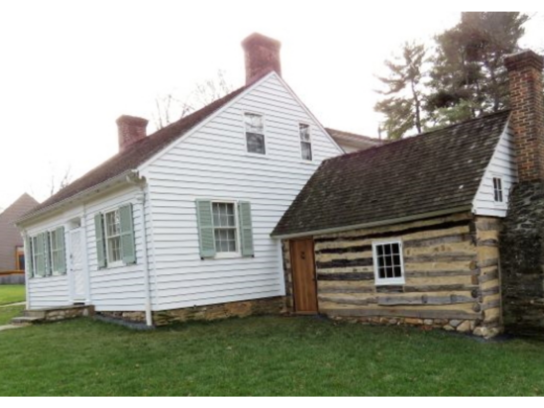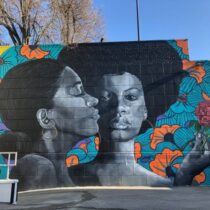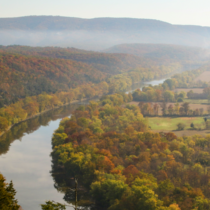
After several months of delay due to the Covid pandemic, the brand-new Josiah Henson Museum in north Bethesda has just opened to the public. It is definitely worth a visit! The Museum tells the story of one of the most astounding and consequential persons to ever live in Montgomery County.
Josiah Henson was born into slavery in the last years of the 1700s in Charles County, Maryland. He was sold at age nine and sent to a plantation in Montgomery County. At first, he obediently served his master, Isaac Riley, and gradually became a trusted household member. This situation continued for more than two decades until Riley sent Henson and his relatives “down the river” to another Riley family plantation in Kentucky. Henson was appalled at conditions in the South, which were even worse than he had experienced in Maryland. Henson tried to buy his freedom, but was tricked by Riley and remained enslaved.
In 1830, Josiah Henson and his wife Charlotte and four children escaped from Kentucky, walked 600 miles through dangerous country to freedom in Canada, with Henson carrying two toddlers on his back the whole way. They braved vicious slave catchers and almost starved to death on their incredible journey.
According to the Museum Site Manager Mark Thorne, Henson later “served as a Conductor on the Underground Railroad and brought 118 slaves to freedom.” In 1849 Henson wrote his autobiography, which described the terrible realities of slavery in Maryland and Kentucky. This non-fiction work was a major source for Harriet Beecher Stowe in 1852, in writing her classic Uncle Tom’s Cabin. Her best-selling novel (the most popular book in America at the time, after the Bible) was credited by President Lincoln with helping to trigger the Civil War and end slavery. When pro-slavery advocates protested that the treatment of slaves shown in Stowe’s novel was too harsh, she specifically cited Henson’s autobiography as a major source, in her 1853 publication The Key to Uncle Tom’s Cabin.
In Ontario, Henson founded a town, learned to read, became a Methodist minister, served as an officer in the Canadian Army militia, captured a rebel ship, traveled to England to exhibit his lumber mill products at the Great Exhibition of 1851 (where he was the only black exhibitor), and met three times with Queen Victoria!
The Henson plantation site here in Montgomery County is the only remaining place in the United States where a Henson structure can be visited by the public. The site is on the National Register of Historic Places, and it represents a large part of the county’s local history. According to Cassandra Michaud, the lead archaeologist for the Henson project, “In the period before the Civil War, 30 to 40 percent of the county’s residents were enslaved black people.”
A visit to the Museum starts by registering ahead of time for a timed tour. After parking at the Kennedy/Shriver Aquatic Center and walking across the street to 11410 Old Georgetown Road, you will view an engaging 12-minute film about Henson’s amazing life. Then you walk a few yards to the Riley/Henson house, where well-done exhibits, sketches and artifacts fill in Henson’s achievements. The climax is the adjacent tiny log kitchen, where Henson was sometimes forced to sleep on the floor. Incredibly, Montgomery Parks archaeologists and volunteers have been able to find the actual dirt floor where Josiah Henson slept – and where he rose up to help end slavery in America.
For information on timed reservations, see: https://www.montgomeryparks.org/parks-and-trails/josiah-henson-park/ Adult admission is $5, seniors and children 6-17 is $4.
Photos courtesy Lew Toulmin
- 1. Plaques around the grounds of the Museum show the conditions of enslaved persons in Maryland at the time. Henson states in his autobiography that, “Ten or a dozen persons…were huddled in a single room like cattle” in slave cabins, and were forced to sleep on dirt floors.
- 2. The log slave kitchen/cabin (right), the white Riley House (center) and the modern Josiah Henson Museum and welcome center (far left).
- 3. Map showing the dangerous 600-mile escape route that the Henson family walked in 1830, from Kentucky to Canada, to escape to freedom.
- 4. The Canadian government has designated Josiah Henson as a “Canadian of National Historic Significance” and in 1983 issued a stamp with his image on it, to honor him. He was the first black person to be so honored in Canada. No similar stamp has been issued in the US – perhaps now it is time?
- 5. Museum exhibits show how the heroic life of Reverend Josiah Henson and the descriptor “Uncle Tom” was turned into a derogatory term over time by proponents of Jim Crow.
- 6. Reverend Josiah Henson was received by Queen Victoria at Windsor Castle in a special audience, and met her three times in all.
- 7. At age 20, Josiah Henson was viciously beaten by a white overseer in Montgomery County, was permanently injured, and was never able to raise his arms above his shoulders again. Despite this, he carried his two toddlers on his back 600 miles to freedom.
- 8. Informative placards and displays in the Museum show the life story of Josiah Henson. Here a display shows Queen Elizabeth II, Prince Philp, and President and Mrs. Obama at Buckingham Palace, examining mementos and records of Josiah Henson’s visits with Queen Victoria.
- 9. Henson Museum Historic Site Manager Mark Thorne stands in front of the Josiah Henson log kitchen and slave cabin. This cabin was rebuilt in the 1850s on the site of the original Henson-era kitchen. Henson was sometimes forced to sleep on the “dirty, smelly” dirt floor of the log kitchen, and archaeologists recently uncovered that actual floor.













Comments are closed.